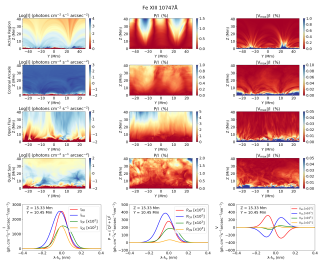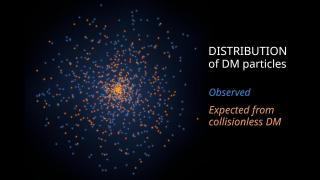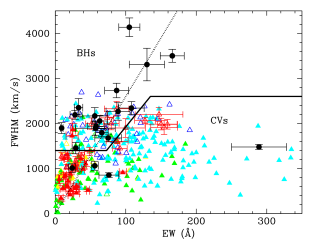Recent observations of the rotation curve of M31 show a rise of the outer part that cannot be understood in terms of standard dark matter models or perturbations of the galactic disk by M31?s satellites. Here, we propose an explanation of this dynamical feature based on the in?uence of the magnetic ?eld within the thin disk. We have considered standard mass models for the luminous mass distribution, a Navarro?Frenk?White model to describe the dark halo, and we have added up the contribution to the rotation curve of a magnetic ?eld in the disk, which is described by an axisymmetric pattern. Our conclusion is that a signi?cant improvement of the ?t in the outer part is obtained when magnetic effects are considered. The best-?t solution requires an amplitude of ?4 ?G with a weak radial dependence between 10 and 38 kpc.
Advertised on
References
(2010) The Astrophysical Journal Letters, Volume 723, Issue 1, pp. L44-L48
It may interest you
-
 The solar corona—the outermost layer of the Sun’s atmosphere—is extremely hot and very low in density. One of the main challenges in solar physics is understanding why the corona reaches temperatures of over a million degrees. This heating is believed to be closely related to the Sun’s magnetic field. However, quantifying the coronal magnetic field is difficult because the light emitted by the corona is extremely faint, and its polarization signals, which encode the information on the magnetic field, are subtle. Thanks to recent advances in technology, telescopes like the Daniel K. InouyeAdvertised on
The solar corona—the outermost layer of the Sun’s atmosphere—is extremely hot and very low in density. One of the main challenges in solar physics is understanding why the corona reaches temperatures of over a million degrees. This heating is believed to be closely related to the Sun’s magnetic field. However, quantifying the coronal magnetic field is difficult because the light emitted by the corona is extremely faint, and its polarization signals, which encode the information on the magnetic field, are subtle. Thanks to recent advances in technology, telescopes like the Daniel K. InouyeAdvertised on -
 The existence of dark matter is probably one of the fundamental mysteries of modern science and unraveling its nature has become one of the primary goals of modern Physics. Despite representing 85% of all matter in the Universe, we do not know what it is. In its simplest description, it is made up of particles that interact with each other and with ordinary matter only through gravity. However, this description does not correspond to any physical model. Finding out what dark matter is requires finding evidence of some kind of interaction of dark matter that goes beyond gravity. In our workAdvertised on
The existence of dark matter is probably one of the fundamental mysteries of modern science and unraveling its nature has become one of the primary goals of modern Physics. Despite representing 85% of all matter in the Universe, we do not know what it is. In its simplest description, it is made up of particles that interact with each other and with ordinary matter only through gravity. However, this description does not correspond to any physical model. Finding out what dark matter is requires finding evidence of some kind of interaction of dark matter that goes beyond gravity. In our workAdvertised on -
 Dormant black holes in X-ray transients can be identified by the presence of broad Hα emission lines from quiescent accretion discs. Unfortunately, short-period cataclysmic variables can also produce broad Hα lines, especially when viewed at high inclinations, and are thus a major source of contamination. Here we compare the full width at half maximum (FWHM) and equivalent width (EW) of the Hα line in a sample of 20 quiescent black hole transients and 354 cataclysmic variables (305 from SDSS I to IV) with secure orbital periods (Porb) and find that: (1) FWHM and EW values decrease with PorbAdvertised on
Dormant black holes in X-ray transients can be identified by the presence of broad Hα emission lines from quiescent accretion discs. Unfortunately, short-period cataclysmic variables can also produce broad Hα lines, especially when viewed at high inclinations, and are thus a major source of contamination. Here we compare the full width at half maximum (FWHM) and equivalent width (EW) of the Hα line in a sample of 20 quiescent black hole transients and 354 cataclysmic variables (305 from SDSS I to IV) with secure orbital periods (Porb) and find that: (1) FWHM and EW values decrease with PorbAdvertised on